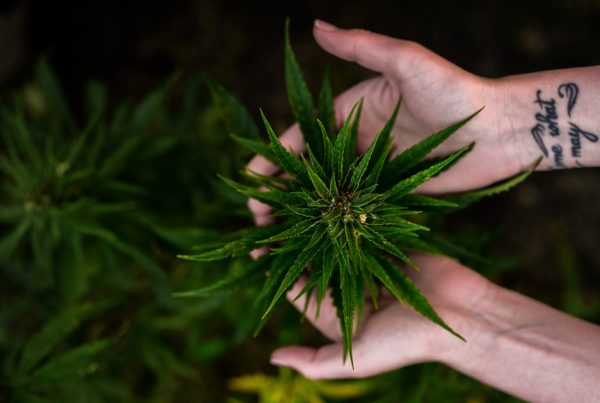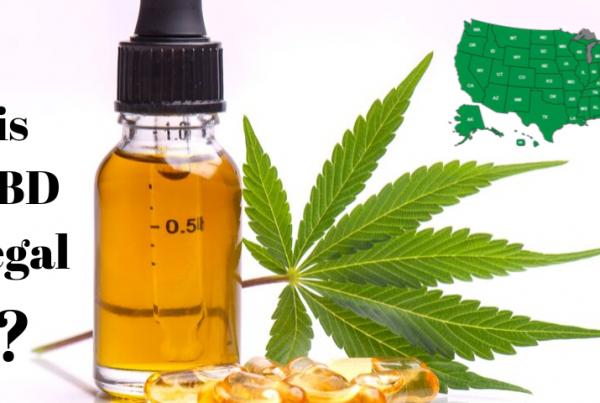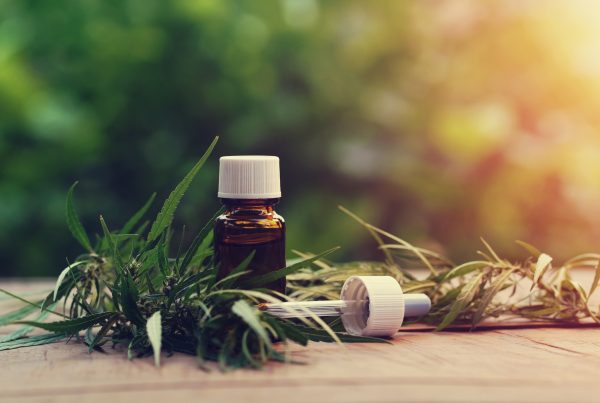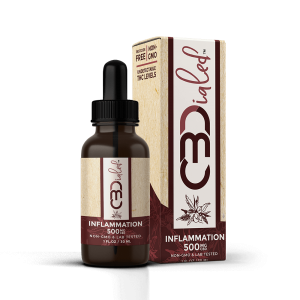
Anyone and everyone are ranting and raving about cannabidiol or CBD as it’s often referred to for short. The product derived from the hemp plant has made major waves across the western world as it’s become increasingly popular in its oil form, as a liquid for vaporizing and to be used topically.
Despite the vast popularity of CBD, it’s still being heavily researched and many consumers are hesitant to buy CBD products because they’re unsure of the effects. The good news is that we’re going to break it all down for you in our ultimate guide to CBD oil and allow you to become versed in what CBD is, its effects on the body and where you can purchase CBD legally.
What Is CBD Oil
Cannabidiol is the full name for CBD, an active component of the cannabis plant. Cannabis plants are often comprised of two main components, CBD and tetrahydrocannabinol (THC.) There are over 120 compounds called cannabinoids, that are found in many plants, with hemp and marijuana being two of the most recognized plants.
The psychoactive part of the plant that gives users the “high” is found from THC. However, CBD has been known to provide certain health benefits to users and medical marijuana users without a stimulating high effect.
CBD oil is often extracted from the hemp plant, which is the cousin of the cannabis plant but possesses a higher percentage of CBD, as opposed to THC. According to the World Health Organization, there’s no evidence of health-related problems from the use of CBD and humans exhibit no behaviour of abuse or dependence while taking it.
Top tier brands will use organically grown hemp with a high-quality growing environment to ensure that the hemp plants provide the richest CBD oil. The original method of extracting CBD oil from hemp plants was with the use of alcohol, however, since then CO2 has become the cleanest, most efficient way of extracting CBD oil and retaining the goodness.
The Effect of CBD on the Body
The human brain is comprised of approximately 100 billion cells that are commonly referred to as neurons. The neurons in the brain communicate with each other via a structural system called synapses. The synapses are composed of a receptor and a transmitter.
When a synapse is inactive, there’s no communication from the transmitter to the receptor side, however, when the synapse is active the transmitter releases molecules that are absorbed by the receptor. The result of this exchange causes an effect somewhere else in your brain and/or body.
Similarly to the way the brain’s synapses work, CBD and the other cannabinoids have similar interactions with your brain. After cannabidiol is introduced into your bloodstream, the CBD molecules activate groups of receptors such as:
- CB1 & CB2
- Serotonin
- Adenosine
- Vanilloid
Those specific receptors have an influence on bodily functions such as the sensation of pain, mood, memory and appetite.
Is CBD Oil Legal
Despite what you may hear, CBD doesn’t get you high and has been made legal in the majority of states in the United States. The legality of CBD is a grey area, with the 50 states having varying levels of restriction. As it currently stands, the federal government still considers CBD to be in the same class as marijuana, however, it doesn’t enforce against the use of CBD.
Current legislation for the purchase of CBD in the United States prohibits the purchase of any CBD products that contain more than 0.3 percent THC. Certain states, such as Virginia, only allow the purchase of CBD if users provide a prescription at the time of purchase. Many consumers purchase CBD online via suppliers and stores without the need for a medical cannabis license.
The legality of CBD and how the government views CBD is slightly confusing and largely depends on whether the CBD oil is sourced from marijuana or hemp.
For residents of Canada, CBD sourced from hemp is perfectly legal and can be purchased online or from a supplier. However, cannabinoids such as CBD and THC sourced from marijuana are regulated by the legislation of the Cannabis Act. For Canadian residents, territorial and provincial legislation also applies, so it’s important to check your local laws.
Are There Any Health Benefits to CBD Oil
The rising popularity of CBD has drawn many consumers and people looking for alternative medicines to switch to using CBD, and PubMed.gov is an excellent primary resource to find all the latest research on the topic.
The Best Ways to Consume CBD
CBD is more readily available, whether you choose to purchase in-store or from an online retailer. The methods of consuming it are continuing to grow with certain methods being more effective than others.
It’s important to choose a method of consumption that’s right for you and fits your specific requirements. Don’t worry if you’re unsure about which methods are available to you, we’re going to break it all down.
Smoking Cannabis Flower
The age-old adage of smoking has been happening for many years and it’s still a popular delivery method for recreational, social and medical smokers. By smoking a cannabis strain that’s high in CBD via a joint, pipe or bong, you can assimilate CBD into your bloodstream. This method will also introduce THC into your bloodstream, although there are strains available that contain nominal amounts of THC.
The main drawback to smoking cannabis flowers is the inhalation of smoke and ingesting harmful byproducts of the combustion process.
Vaping
Vaporizers and vape pens are a healthier alternative to smoking cannabis, as there’s no smoke or combustion. Vaporizing CBD oil inside a vaping device provides users with a convenient and portable method of consumption that can be administered at home or on the go.
CBD oil for use in a vaporizer is a lot healthier for the user’s body because the oil is refined and free from most of the impurities found in other cannabis products. This is beneficial to users and patients to avoid introducing additional chemicals into their system.
Tinctures
CBD oil can be purchased in small tincture bottles that can contain additional components such as extracts and flavourings. The tinctures should be dripped under the tongue and held there for up to 60 seconds to allow the CBD to be absorbed into the bloodstream through the sublingual artery.
As one of the most popular ways to consume CBD, tincture bottles can be bought in different concentration strengths, ranging from 200mg of CBD to 3000mg and higher. Consult your physician and an expert at a reputable supplier to understand the most suitable strength for you.
Edibles
Not everyone enjoys the sensation or practice of smoking and vaping, so edibles are a great alternative to inhalation. Edibles allow the user to eat the CBD oil and break the nutrients down via the digestive system.
CBD edibles can be bought in various forms and some of them can be quite delicious. You can get a dose of CBD oil from edibles such as:
- Gummies
- Brownies
- Cake
- Honey
- Tea
- Butter
Soft Gel Capsules
Capsules are a portable, inconspicuous and simple way to ingest your daily dose of CBD oil. It’s as easy as putting one into your mouth and taking a sip of water to wash it down.
Is CBD Oil Safe to Use
Cannabidiol may cause certain side effects within users that include nausea, irritability and fatigue. CBD is marketed as a health and lifestyle supplement as opposed to medication and the FDA doesn’t regulate the quality and purity of dietary supplements.
It’s always important to choose CBD products from reputable brands and suppliers after conducting your own research. Without severe regulations in place on CBD, the products you purchase may contain additional elements that could have an effect on medications. It’s best to speak to a physician about CBD and whether it can be taken in conjunction with any medication that you may be on.
Other side effects that CBD oil may cause:
- Diarrhea
- Changes in appetite
- Weight loss and weight gain
The trials and research on CBD have been conducted predominantly on adults, experts do not recommend the use of CBD oil on children because there’s such little research to support the effects on children.
How Much CBD Oil Should I Take
There’s no clear-cut definition of how much CBD you should take. It can depend on a lot of factors such as your tolerance to CBD and what the desired effect is.
Whether you’re a first time user of CBD or a seasoned veteran, it’s always important to start low and take it slow. By starting with small amounts and a low concentration, you can give your body time to adapt and become conditioned to taking higher strengths and doses. It’s also important to note that different delivery methods will have different concentrations of CBD, so the effects may be more potent when consuming it in a particular way.
Is CBD Right for Me
Taking CBD and knowing if it’s right for you is a case of trial and error. As suggested above we advise our customers to start slowly on low doses and work their way up.
The benefits of CBD outweigh the minor side effects and as time progresses and CBD is researched further, we’ll be given definitive answers on how CBD can dramatically improve the health and wellness of people.
Speak to a qualified physician or budtender to get more assistance on how CBD can benefit you. Furthermore, a budtender will be able to provide you with in-depth knowledge of the most suitable CBD delivery method for you.







